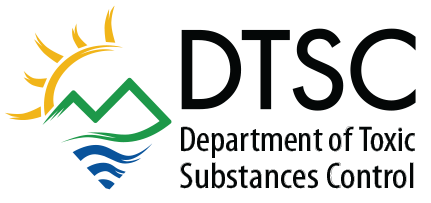
FOR IMMEDIATE RELEASE
July 29, 2015
DTSC Contact: Russ Edmondson
(916) 323-3372
Russ.Edmondson@dtsc.ca.gov
Alameda County DA’s Contact: Teresa Drenick
(510) 272-6280
Teresa.Drenick@acgov.org
DA Nancy E. O’Malley and DTSC Director Barbara A. Lee Announce
Sentencing of Two Defendants for Environmental Crimes
SACRAMENTO – Alameda County District Attorney Nancy E. O’Malley, together with the California Department of Toxic Substances Control (DTSC) Director Barbara A. Lee, announced the sentencing today of Kirk Hayward and Charles Seaton, respectively the former owner and the former vice president of Clearwater Environmental Management, Inc., for felony convictions of conspiracy.
For years, Hayward and Seaton ran the Union City-based company and systematically defrauded Clearwater’s customers, falsified Clearwater customers’ official hazardous waste disposal records, and transported hazardous waste without a license from DTSC.
Defrauded Clearwater customers, including BART, Closure Solutions, Pape Machinery, and Recology, had hired the business to ensure compliance with their legal obligations as generators of hazardous waste, to lawfully transport and dispose of their hazardous waste, and to truly and accurately document disposal in official hazardous waste tracking records called ‘manifests’. However, Clearwater failed to provide customers with all of these environmental services.
“The defendants’ intentional and repeated crimes not only cheated Clearwater’s customers, but wholly undermined the integrity of environmental laws designed to protect public health and the environment,” said District Attorney O’Malley. “We will not tolerate hazardous waste crimes, including the falsification of hazardous waste records. My office greatly appreciates the considerable resources spent and expertise demonstrated by DTSC’s investigators that supported this successful prosecution.”
“DTSC is committed to strong enforcement of hazardous waste laws and the protection of public health,” said DTSC Director Barbara A. Lee. “Our criminal investigation unit worked in close partnership with the Alameda County District Attorney to stop Clearwater’s reckless mismanagement of hazardous waste and to make sure it doesn’t happen again. These partnerships are tremendously effective and we will continue to support local environmental prosecutors.”
Clearwater lost its license (called a ‘registration’) to transport hazardous waste in 2007 after Hayward was criminally convicted and ordered to serve 60 days in jail and pay a $70,000 fine stemming from an earlier DTSC investigation. After losing its license, Clearwater lawfully transported waste that was non-hazardous, but also transported waste that was hazardous, by fraudulently using the identity and license of another transporter on customers’ official hazardous waste manifests. The defendants also often falsified the disposal site in customers’ manifests. They represented that waste had been disposed of at Clearwater’s facility in Silver Springs, Nev., when the waste never went there, according to facility employees and records. In truth, Clearwater illegally consolidated, stored, and/or disposed of the waste.
Today the Honorable Judge Dan Grimmer ordered Kirk Hayward to serve one year in the county jail and five years of formal probation, and to pay miscellaneous fines. He also made a permanent order that defendant Hayward not own, manage, or consult for a hazardous waste company. Defendant Charles Seaton was ordered to serve four months in the county jail and five years of formal probation, and to pay miscellaneous fines. He was also ordered not to own, manage, or consult for a hazardous waste company for ten years.
# # #
FOR GENERAL INQUIRIES: Contact the Department of Toxic Substances Control to report illegal handling, discharge, or disposal of hazardous waste or other environmental concerns at Calepa.my.salesforce-sites.com/complaints/Complaint.
The mission of DTSC is to protect California's people and environment from harmful effects of toxic substances by restoring contaminated resources, enforcing hazardous waste laws, reducing hazardous waste generation, and encouraging the manufacture of chemically safer products.
